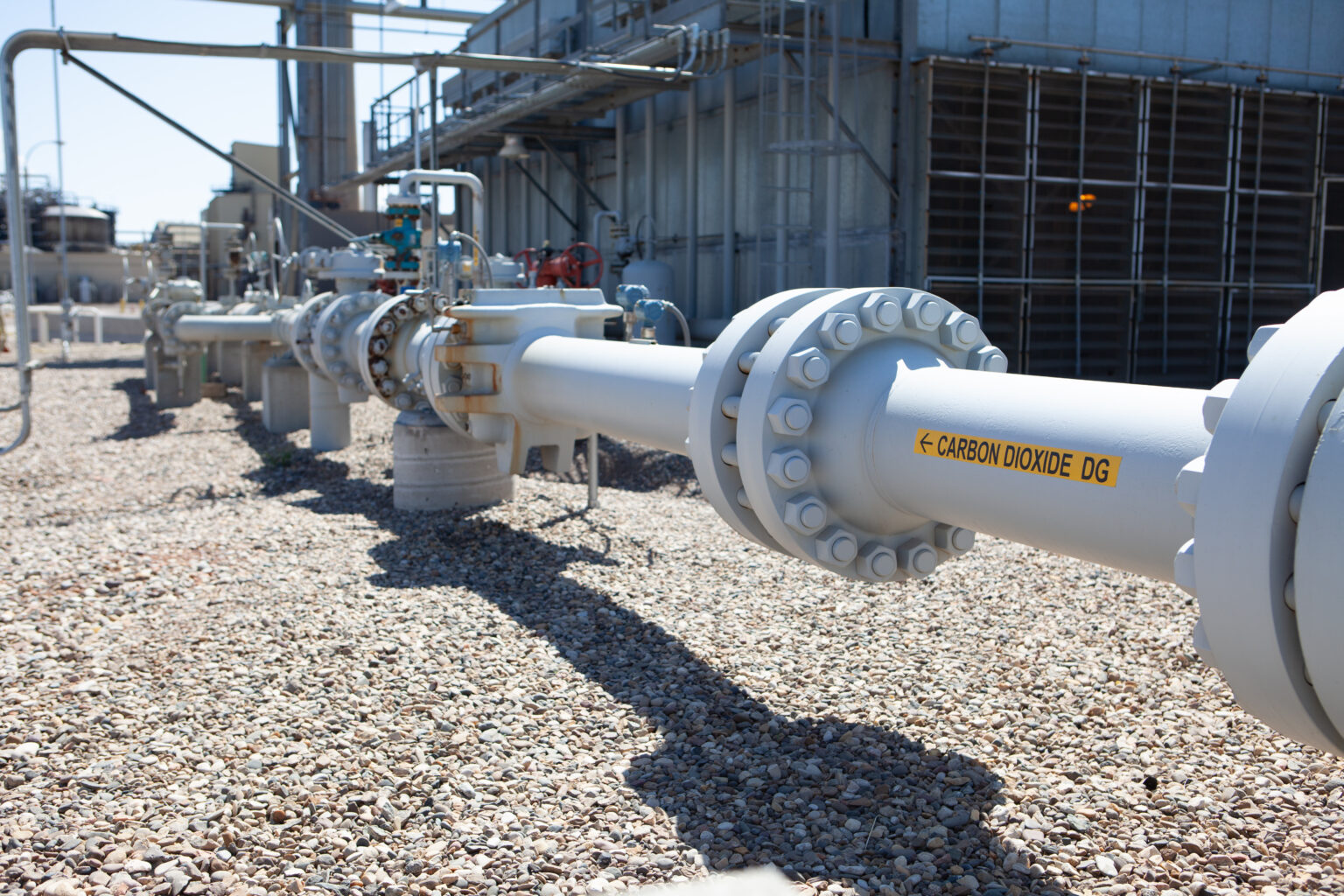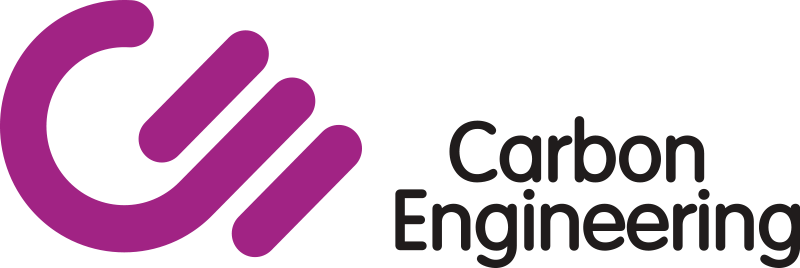
Direct Air Capture technology is evolving beyond its association with enhanced oil recovery, with companies developing diverse applications that prioritize permanent carbon removal. DAC technologies extract CO2 directly from the atmosphere at any location, unlike carbon capture which is generally carried out at the point of emissions.
While EOR provided initial revenue pathways for DAC deployment, innovative companies are now demonstrating multiple climate-positive alternatives. An alternative approach is to utilize atmospheric CO2 on-site to produce value-added renewable fuels, creating sustainable business models that align with global decarbonization goals.
>> RELATED: CCUS Revolution: How 120x Growth Could Transform Net Zero

Alternative Applications Driving Market Growth
Recent research demonstrates a gas-phase dual-bed direct air carbon capture and utilization flow reactor that produces syngas (CO + H2) through on-site utilization of air-captured CO2 using light. This breakthrough enables conversion of atmospheric carbon into valuable fuel products without requiring high temperature processing.
The integration of DAC with fuel synthesis creates closed-loop systems where atmospheric carbon becomes valuable input material. Materials for capturing and converting atmospheric CO2 highlight the crucial role of catalysts for CO2 conversion in these emerging applications.
Several companies are developing modular systems that combine capture and conversion technologies. CarbonCapture Inc.'s carbon removal service captures CO2 from the air and permanently stores it underground, while other firms focus on utilization pathways.

"We believe that our direct capture technology is going to be the technology that helps to preserve our industry over time."
Vicki Hollub, Occidental Petroleum CEO
(paraphrased from source article)
Building Materials and Permanent Storage
The CO2 can be permanently stored in deep geological formations, providing a pathway for genuine carbon removal rather than temporary storage. This permanent storage approach addresses concerns about long-term climate impact.
Direct air capture and integrated CO2 conversion (DACC) technologies have emerged as promising approaches to mitigate the increasing concentration of carbon dioxide in the Earth's atmosphere. These integrated systems can produce building materials while achieving permanent carbon removal.
The construction industry represents a significant opportunity for DAC-derived materials. Carbon mineralization processes can convert captured CO2 into stable compounds suitable for construction applications, creating value while ensuring permanent sequestration.
Verified DAC Applications Beyond EOR
- Permanent geological storage: Deep underground sequestration
- Synthetic fuel production: Syngas and renewable fuel generation
- Chemical feedstock: Input for industrial processes
- Building materials: Carbon-negative construction products
- Direct utilization: On-site conversion to valuable products
Policy Support and Investment Trends
The Department of Energy invested $1.2 billion to further developments of direct air capture facilities in Texas and Louisiana. These projects are the result of initial selections from President Biden's Bipartisan Infrastructure Law. This represents the largest government commitment to scaling DAC technology.
The federal investment focuses on permanent storage rather than EOR applications, signaling policy preference for genuine carbon removal solutions. These projects will demonstrate commercial viability of DAC for climate-positive applications.
International policy frameworks are increasingly supporting DAC applications that demonstrate additionality in carbon removal. The emphasis on permanent storage and verifiable carbon removal is driving investment toward non-EOR applications.

>> In Other News: Conestoga Energy Announces Acquisition of SAFFiRE Renewables, LLC to Advance Production of SAF and Low Carbon Intensity Biofuels
Investment Opportunities in Climate-Positive DAC
Venture capital and corporate investors are prioritizing DAC companies that demonstrate sustainable revenue models beyond fossil fuel applications. The focus has shifted toward technologies that create permanent carbon removal while generating valuable products.
Companies developing integrated DAC solutions report stronger investor interest when their business models align with corporate sustainability goals. This includes applications in sustainable aviation fuels, chemical production, and carbon-negative building materials.
The emergence of compliance carbon markets and voluntary offset programs is creating additional revenue streams for DAC operators. Projects that demonstrate permanent storage and lifecycle carbon negativity command premium pricing in these markets.
"DAC is the holy grail for achieving net-zero emissions without cutting oil and gas production."
Darren Woods, ExxonMobil CEO
(paraphrased from source article)
Technology Innovation and Scaling Pathways
Modular DAC designs are enabling distributed deployment across multiple industrial sectors. This approach reduces capital requirements compared to large centralized facilities while allowing incremental scaling based on demand and available revenue streams.
Integration with renewable energy sources is becoming standard practice for new DAC deployments. Solar and wind power integration reduces operating costs while ensuring that the carbon removal process doesn't create additional emissions.
Direct Air Capture is emerging as a critical climate change mitigation strategy, offering a pathway to actively remove atmospheric CO2. Technological advances are making these systems more efficient and cost-effective.
Global Deployment Examples
Carbon Engineering is a commercial DAC company founded in 2009 and backed by Bill Gates and Murray Edwards. It runs a pilot plant in British Columbia, Canada, that has been in use since 2015 and is able to extract about a tonne of CO2 a day.
An economic study conducted from 2015 to 2018 estimated the cost at $94–232 per tonne of atmospheric CO2 removed. Recent analysis suggests costs could reach $87–140 per gross tonne CO2 captured by 2050 at sufficient scale.
Climeworks operates as a high-quality carbon removal company serving top businesses to enable the scale-up of the carbon removal industry. Their commercial operations demonstrate viable pathways for permanent carbon removal.
| Company | Location | Application | Status |
|---|---|---|---|
| Carbon Engineering | British Columbia | Permanent Storage | Operating since 2015 |
| Climeworks | Global | Commercial Removal | Active Operations |
| CarbonCapture Inc. | United States | Underground Storage | Commercial Service |
Market Transformation and Future Outlook
The DAC industry is experiencing rapid diversification away from EOR dependencies. Companies that initially considered EOR as their primary revenue source are now developing multiple application pathways to reduce market risk and improve environmental impact.
Corporate sustainability commitments are driving demand for verified carbon removal solutions. Companies seeking science-based targets increasingly prefer DAC applications that demonstrate permanent storage over temporary or questionable removal methods.
Technology costs continue declining as deployment scales increase and operational experience improves. This cost reduction is making non-EOR applications increasingly competitive, creating sustainable business models that align with climate goals.
The combination of policy support, technological advancement, and market demand suggests that DAC's future lies in applications that maximize climate benefit while creating economic value. This evolution represents a fundamental shift toward genuinely climate-positive carbon removal solutions.
Subscribe to the newsletter
Daily decarbonization data and news delivered to your inbox
Follow the money flow of climate, technology, and energy investments to uncover new opportunities and jobs.
Companies
-
Occidental Petroleum Corporation
OXY
-
C
Carbon Engineering
-

Carbon Engineering
-
-

Climeworks
-
-

CarbonCapture Inc
Latest issues
-
Can One Truck Fix Hydrogen’s Biggest Problem?
Inside This Issue 🚛 Alberta's Shared Truck Model Could Crack Hydrogen Adoption ✈️ ZeroAvia Completes Financing Round 🌾 Frontier And NULIFE Scale New Biowaste Carbon Removal Approach 🔥 WAGABOX® Of ...
-
North America’s Carbon Removal Year in Review: Winners, Losers, Surprises
Inside This Issue 🌎 North America's Carbon Removal Year in Review: The Deals, Policies, and Milestones That Shaped 2025 🚢 Hapag-Lloyd And North Sea Container Line Win ZEMBA Second E-Fuel Tender 🪨 ...
-
CCS Just Got Cheaper Than Anyone Expected
Inside This Issue 🧪 Shrinking the CCS Energy Penalty: A Molten Borate Breakthrough Promises Viability for Hard-to-Abate Canadian Oil & Gas 👤 Syntholene Energy Corp Appoints Former CEO of Carbo...
Company Announcements
-
LanzaTech Reaches 53% Non-Controlling Ownership Milestone in LanzaJet
LanzaTech Global, Inc. (NASDAQ: LNZA) ("LanzaTech" or the "Company"), a leader in carbon transformation technology, today announced an increase in its holdings of LanzaJet, Inc. ("LanzaJet"), a lea...
-
WAGABOX® Of Steuben County, The First WAGABOX® Unit In The US
Deployment / Application Site Location: Bath, Steuben County, New York, USA Site/Plant name: Steuben County Landfill Partners/Clients: Steuben County (landfill owner), Corning Natural Gas (...
-
ZeroAvia Completes Financing Round
KEMBLE, UK and EVERETT, Wash., Dec. 22, 2025 /PRNewswire/ -- ZeroAvia today announced that it has completed a further round of financing, led by Barclays Climate Ventures, Breakthrough Energy Ventu...
-
CHARBONE Delivers Its First Load Of Clean UHP Hydrogen In Ontario
BROSSARD, QC, Dec. 22, 2025 /PRNewswire/ -- CHARBONE CORPORATION (TSXV: CH; OTCQB: CHHYF; FSE: K47) ("CHARBONE" or the "Company"), a North American producer and distributor specializing in clean Ul...